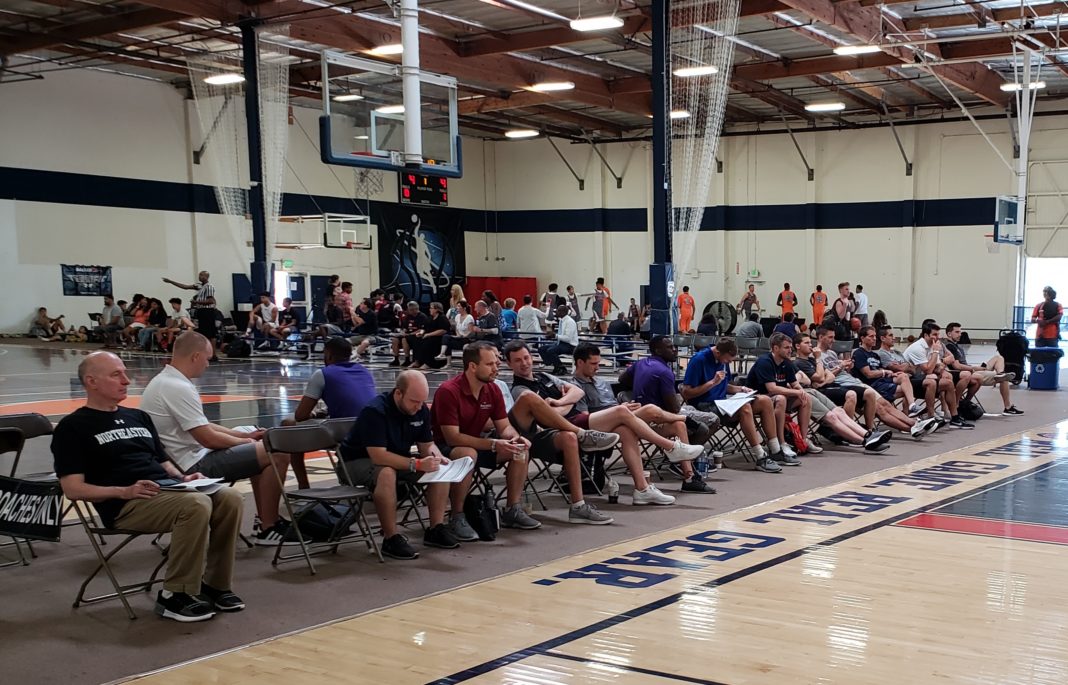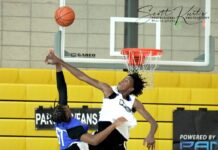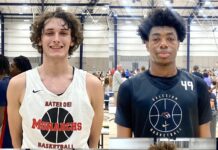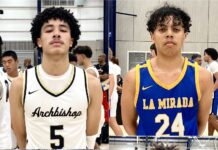The current Corona Virus (Covid-19) crisis has not only sent grassroots hoops into chaos and confusion but obviously the entire USA as well. This virus is a very serious thing but the full extent and longevity of its effect is still rather unknown although public health experts like Anthony Fauci are espousing worst case scenarios that are petrifying the hell out of people and inspiring them to act like storm-troopers at local CostCo and Wal-Mart stores instead of remaining calm and cool. That selfish consumer behavior has to stop and our government decisions should be based and proceed on facts and data as they are ascertained.
What do we know so far about this virus: https://www.uchicagomedicine.org/forefront/prevention-and-screening-articles/wuhan-coronavirus
Thus, it obvious that the persons most at risk of serious hospitalization and possible death are those over 60 and with serious underlying health conditions. The perceived danger is that too many of those persons that fall into that category will get sick all at the same time, putting a tremendous load of pressure on our nation’s medical facilities which may not be able to sustain the needs of these seriously infected. Besides social distancing, there must be an urgency by federal and state governments to build temporary health facilities and acquire necessary medical supplies ASAP to meet this pressing need, especially in hot spot infection areas of the nation like New York City.
Where does the grassroots hoops community go from here?
It’s obvious that this 2020 Spring and Summer will not be your typical grassroots year.
Besides the health issues and dangers related to Covid-19, the economic effect and damage to grassroots teams and event operators will be extensive and potentially crippling. Hundreds of teams have booked flights and hotel rooms (many non-refundable) and event operators have spent months on planning, incurred staff expenses and placed facility deposits. Event operators who were hurt last year by the NCAA limiting “live” period viewing by D1 coaches, face even more financial hits due to this crisis. With that being said, I am optimistic that things can resume rather quickly once we as a country get a grip on the Covid-19 outbreak. My gut feeling will be that things (school re-openings, CDC recommendations being revised, etc.) will be getting back to some sense of normal starting in late April/early May.
NCAA Spring Live-Periods:
This year’s NCAA Spring Live Periods are scheduled to be during the April 17-19 and April 24-26 live-periods. Officials at the NCAA office are now trying to decide what, if anything, to do with these scheduled live periods. All three major shoe-sponsored circuits (Nike EYBL, adidas & Under Armour) have already postponed their own April live period events. Many believe that the NCAA will postpone these live-periods into May or later or possibly restoring a live-weekend in July between the currently scheduled AAU team live period (July 9-12) and the NCAA’s new initiative, the College Basketball Academy, individual camps at four regional sites on July 20-26.
One group that could very well impact the rescheduling of 2020 live-periods is the NABC and its coaching community. The current NABC director Jim Haney is retiring this year and a search is currently in full bloom (assisted by executive search firm DHR International) to select the organization’s next leader.
With 25-plus years of event experience serving as my lens, here’s what I propose:
* Move one of original April Live Periods to May (May 15-17)
Moving one of the April Live Periods to Friday-Sunday May 15-17 is a realistic goal and will blunt to some degree the loss of the two April live periods with the following modifications:
** Make the starting time for Friday May 15th 4pm instead of the usual 6pm time start. That will allow D1 schools, especially low-mid programs as well as newly hired coaches a few more opportunities to see more players. It might not seem like a lot but could make a difference especially to those non-elite programs.
** Make the ending time on Sunday May 17th 5pm. Again this 1 hour time extension (although minor) means a great deal for low-mid programs as well as well as non-elite prospects and will give event operators added flexibility with their event scheduling.
Having the May live period NOT on Memorial Day weekend (a week later) would also allow college coaches to spend the holiday weekends with their families instead of being on the road that weekend. Something the NABC and its coaches would appreciate and approve of.
What to do with the 2nd April Live Period scheduled for 2020? Move it to September 2020 (see below).
* Add the Pangos All-American Camp (May 29-31) to the NBPA Top 100 Camp as a venue to scout D1 prospects
Last year, D1 college coaches were allowed to watch for a 24 hour period action at the NBPA Camp in Charlottesville VA. In the interest of full disclosure, although I am the director and founder of the Pangos All-American Camp since 2003, the Pangos AA Camp has clearly established itself as a Top 3 national “all-american” camp (along with the NBPA Top 100 Camp and Nike Skills Academy held annually in August) and is on par talent-wise with the NBPA Camp as well as being NBA-certified for past 2 years (camp attracted 25 NBA teams in 2019).
While the NCAA has a formal working relationship with the NBA and NBPA, it is fundamentally unfair to give the NBPA any recruiting market-place advantage over other similar camps that merit being treated the same way or meeting the same criteria. Thus, the Pangos All-American Camp should get the same opportunity as the NBPA Camp to have part of its camp be “live” for college coaches, considering the fact that the two camps both annually host the elite of HS prospects and would be a worthwhile evaluation event for scores of D1 programs.
* Add Wednesday night July 8th to July 9-12 NCAA Live Period Window
Up until 2019, the previous NCAA July recruiting calendar for several years included a Wednesday night (5pm start) for the month’s first window. For some odd reason, that Wednesday start was deleted from last year’s only July AAU live period window. While that may seem insignificant to most, having an additional night to scout prospects while being currently extremely limited doing so is a big deal, especially for low-mid D1 programs and should be reinstated like it was pre-2019.
* NCAA College Basketball Academy Must Get Its Act Together
One of the offspring of the Dan Gavitt and Condoleezza Rice led NCAA recruiting reform committee was the creation of four regional camps. These NCAA regional camps were designed to replace college basketball’s annual college recruiting mecca, Las Vegas, which for several years served as the final destination of the summer recruiting trail and was recently the epicenter of recruiting irregularities resulting in FBI investigations and charges as well as plenty of bad PR for the NCAA. In response to being questioned about replacing this traditional Vegas week full of hundreds of AAU teams with the new NCAA regional recruiting camps concept, Gavitt, in a New York Times article said “We’re not going back to the way it used to be. That ship has sailed.”
Being that these new NCAA regional camps (armed with a reported $10 million-plus budget) would be the ONLY places where D1 coaches could evaluate prospects during the last July NCAA live period, the NCAA forget to ask itself one important question: who is going to assist us in IDENTIFYING who the top prospects are for the entire realm of low-to-mid-to-high major college programs these camps are intended to serve?
Instead of enlisting the seasoned help of a diverse mix of veteran and knowledgeable scouts like Van Coleman, Frank Burlison, Tom Konchalski, Eric Bossi, Clark Francis, Vince Baldwin, John Stovall, Jerry Meyer, Evan Daniels, Corey Evans, Scott Phillips, Jimmy Hicks, Andrew Slater, Alan Branch, Dain Ervin, Norm Eavenson, Christian Popoola, Thom Jones, Chad Groth, Derrick Ellison and Ronnie Flores, the NCAA relied on two fundamentally flawed player selection methods:
a) Players nominating themselves without qualified and knowledgeable NCAA or camp staff screening the nominations
b) NCAA D1 coaches nominating players for the camp
This dual-mistake was a colossal failure. The NCAA had nobody in their office present to properly and accurately determine the quality of each self-nominee and how they compared to the pool of other self-nominated players. Additionally the lack of camp self-nominating information being disseminated to all potential players nation-wide resulted in many qualified D1 prospects missing the deadline to apply for these regional camps and required all players as a pre-requisite to pay to enter the NCAA Clearinghouse in order to be nominated and selected, resulting in many low-income players not having the financial means to participate in the process. Unknown to most, there was a NCAA fee-waiver option for low-income prospects but most players were not aware of this possibility until after the fact.
The NCAA also make a huge miscalculation that D1 college coaches would be interested and willing to participate honestly in nominating players to the camps. Consulting with retired college coaches (and having a little common-sense) should have alerted the NCAA that a low-mid major college coach who had discovered a local or regional sleeper that bigger schools weren’t yet aware of, would never wisely be in favor of that player auditioning his talents in front of higher profile programs that may offer that prospect and thus potentially steal that player from him.
These two huge NCAA errata resulted in massive failure in Year 1 of these camps. Instead of watching a bevy of diverse D1 level prospects coast to coast, college coaches were relegated to watching tons of non-D1 prospects parade in front of them for an entire week which was (for the most part) a complete waste of their time and schools’ recruiting resources. Additionally, the camps, designed to showcase up to 2,400 prospects, operated at far less than full capacity at each of the four regional sites and its artificial registration deadline barred several worthy D1 prospects (many of whom would have paid their own way to the camps) from participating despite plenty of camp space available which made absolutely no sense.
This time the NCAA needs to get it right in 2020. Its time to listen to their soldiers on the ground who on a regular basis interact directly with prospects, grassroots teams and scouting services as well as former coaches like Steve Lavin who ran the Western regional camp’s instructional component last year. Adam Morrissey directly supervises the NCAA certification of scouting services and is involved this year with the organization of these camps. Empower him and give him the resources necessary to create player selection committees for each regional camp in order to help identify players deserving of invites and who are good enough to warrant D1 evaluation. It’s really that simple.
* Move the 2nd of the original 2020 April Live Periods to September
Years ago the September Live Period was a great time of the year for D1 coaches to evaluate prospects. Two of the biggest benefits of having a September Live Period was it allowed players who under-performed or were hurt in July, another chance to redeem themselves directly in front of D1 coaches and an opportunity for D1 schools to more closely get a good look at HS underclassmen. Seeing college coaches watch top players like Paul Pierce, Baron Davis, Tayshaun Prince and Tyson Chandler impress at my Fullcourt Press Fall Hoops Classic are just a few of my many great memories from past NCAA September live periods.
The September Live Period should have never been eliminated by the NCAA. It’s time to restore prospect evaluation during this time of the year.
My recruiting calendar proposals in response to the Covid-19 crisis are just a few good ideas that would inject much needed common-sense and fairness into a current NCAA “one size fits all” recruiting model in severe need of retooling and would be beneficial to all tiers of D1 college programs as well as high school prospects whose recruiting exposure opportunities have been harmed greatly by recent NCAA changes.
***A note about the author of this article: Dinos Trigonis has been the Editor-in-Chief and Publisher of the both Nothing But Net Magazine and the Fullcourt Press web site and scouting service as well as an event operator, basketball coach and skills instructor since 1993. Dinos played varsity basketball at Long Beach Wilson High School and is a graduate of Long Beach State (BA – Political Science) and Temple Law School (Juris Doctorate). While at Temple Law School in Philadelphia, Trigonis founded and was the editor-in-chief of the Temple Political & Civil Rights Law Review. As head coach of the Belmont Shore Basketball Club (based in Long Beach CA since 1993), Dinos has coached 217-plus players that have received NCAA Division I scholarships, 15 players that were chosen as McDonald’s All-Americans as well as 33 players that have reached the NBA.





